Lung cancer continues to be one of the most common cancers worldwide, claiming more lives yearly than breast, colon, and prostate cancers combined. It is estimated that lung cancer accounts for nearly one in five cancer deaths globally. In 2012, there were 1.8 million newly diagnosed cases of lung cancer alone. The American College of Chest Physicians (CHEST), alongside members of the Forum of International Respiratory Societies (FIRS) commemorates, celebrates and supports those impacted by lung cancer. FIRS joins the grassroots efforts of the lung cancer community to raise awareness about lung cancer and its global impact, creating an educational movement of understanding lung cancer risks as well as early treatment around the world.
Lung cancer was a rare disease in early 20th century but its incidence has gradually increased with increased smoking and it has become the most common type of cancer in the world. The lung cancers accounts for 12.8% of cancer cases and 17.8% of mortalities of cancer worldwide. Lung cancer is a preventable disease. The factors that play a role in cancer development include tobacco products, industrial products (uranium, radiation, asbestos) air pollution, and nutritional deficiencies. Recent studies have demonstrated that the critical factor increasing the risk of lung cancer is the long-term respiration of carcinogenic materials.
Epidemiologic case-control studies by 1950s proved that smoking was strongly correlated with lung cancer. The first findings that smoking was a cause of lung cancer were published in 1962. Smoking is responsible for developing lung cancer by 94%. The risk of lung cancer is 24-36 times higher in smokers than in non-smokers. The risk is 3.5% in passive smoking. Age to start smoking, period of smoking, number of cigarettes smoked, and type of tobacco and cigarette have influence on the risk of developing lung cancer.
The IASLC World Conference on Lung Cancer (WCLC) is the world’s largest meeting dedicated to lung cancer and other thoracic malignancies. More than 7,000 delegates come from more than 100 countries to discuss the latest developments in thoracic malignancy research. Attendees include surgeons, medical oncologists, radiation oncologists, pulmonologists, radiologists, pathologists, epidemiologists, basic research scientists, nurses and allied health professionals and patients.
It is important that IASLC members help communicate the vast threat lung cancer poses around the world. They need the public and the media to understand that new research, diagnosis and treatment breakthroughs in the last 10 years have brought new hope to patients and their families.

Word of the Day
| |||
| Definition: | (noun) One who has a political appointment in the government. | ||
| Synonyms: | placeseeker | ||
| Usage: | They viewed the placeman as a colorless bureaucrat. | ||
.jpg)
Idiom of the Day
think (someone) hung the moon and the stars— To consider someone to be extraordinary, the best, or exceptionally wonderful. |

History
MTV Is Launched (1981)
MTV is an American cable television network that was originally created to broadcast videos of pop and rock musicians. It quickly gained a wide following, and soon virtually all major pop and rock performers were making videos to be aired on MTV. In the 1990s, MTV diversified its programming, airing game shows, cartoons, sitcoms, documentaries, and reality shows. The network has had a profound impact on both the music industry and popular culture.
first music videos on mtv:
The very first video to be shown was "Video Killed the Radio Star" by the Buggles.
Herman Melville (1819)
Neglected for much of his career but now considered one of the greatest American writers, Melville was born into an impoverished family and had little formal schooling. He sailed for the South Seas on a whaler in 1841, jumped ship after 18 months, and spent the next 2 years on various Pacific islands. His popular first novels were based on these adventures. His masterpiece, Moby-Dick, is both an intense whaling narrative and a symbolic examination of US democracy.
Stranger than Fiction: Ants that Look like the Dragons in 'Game of Thrones'
Sometimes reality is more imaginative than fiction. Itty-bitty versions of two of Daenerys Targaryen's dragons actually exist outside of the "Game of Thrones" TV series in a more mundane form: They're ants.
1774 - Oxygen was isolated from air successfully by chemist Carl Wilhelm and scientist Joseph Priestley.
1779 - Francis Scott Key was born. He was an American composer, attorney, poet, and social worker. He wrote a poem called "Defence of Fort McHenry" that became the lyrics to the song "Star-Spangled Banner."
1790 - The first U.S. census was completed with a total population of 3,929,214 recorded. The areas included were the present states of Connecticut, Delaware, Georgia, Kentucky, Maine, Maryland, Massachusetts, New Hampshire, New Jersey, New York, Pennsylvania, Rhode Island, North Carolina, South Carolina, Tennessee, Vermont and Virginia
1873 - Andrew S. Hallidie successfully tested a cable car. The design was done for San Francisco, CA.
1893 - Shredded wheat was patented by Henry Perky and William Ford.
1907 - The U.S. Army established an aeronautical division that later became the U.S. Air Force.
1960 - Chubby Checker's "The Twist" was released.
1971 - "The Sonny and Cher Comedy Hour" was debuted on CBS-TV.
1973 - The movie "American Graffiti" opened.
1993 - Reggie Jackson was admitted into the Baseball Hall of Fame in Cooperstown, NY.

DAILY SQU-EEK

Pictures of the day

Soldiers Playing Cards and Dice (also known as The Cheats), c. 1618–1620, by Valentin de Boulogne (c. 1590 – 1632). Born in Coulommiers, France, Valentin was the son of a painter and studied in Italy under Simon Vouet.

Black Water
Photograph by Jakir Hossain Rana, National Geographic
Seen from above, a small boat travels the Buriganga River, thick and dark with pollution, in Dhaka, the capital city of Bangladesh. Though the water is filled with human and industrial waste, millions depend on it for their livelihood and transportation. “The Buriganga is economically very important to Dhaka,” Jakir Hossain Rana writes. “Launches and country boats provide a connection to other parts of Bangladesh.”

knit
this is one i do as a small gift, etc. love it in variegated, too !
knit
knit
knit
knit
thanks, sally


crochet
crochet
crochet
crochet
crochet


RECIPE
Dutch Baby
A Dutch baby is a light, fluffy breakfast food similar to a popover. Served simply with powdered sugar and lemon wedges, fruit compote, or syrup.
Author: Kat Jeter
Recipe type: Breakfast
Cuisine: American
Serves: 1-2
Ingredients
- ¾ cup flour
- ¾ cup milk
- 3 eggs
- 2 tbsp butter
Instructions
- Place butter in a cast iron pan.
- Put the pan in oven and preheat to 425 degrees.
- While the oven is preheating mix the other ingredients in a bowl using a whisk.
- When oven is preheated and the butter is melted pour in the batter.
- Bake for 20 minutes.
- Remove from oven and sprinkle with powdered sugar.
- Add your toppings and serve.

CROCKPOT RECIPE

SWEETS
Cinnamon Apple Ring Doughnuts

1 egg
2/3 cup milk
1 teaspoon vegetable oil
1 cup all-purpose flour
2 tablespoons sugar
1 teaspoon baking powder
Pinch of salt
Apples (I used Honeycrisp apples)
Vegetable oil (for deep frying)
Cinnamon and sugar to sprinkle over doughnuts
1. Peel, core, and slice your apples. mine are about 1/2 inch thick. If you are using a deep fryer, turn it on now and get it to about 375 degrees F.
2. Mix the egg, milk and oil in a bowl.
3. Mix flour, baking powder, sugar and salt. Combine with wet mixture.
4. Dip your apples in the patter making sure they are fully covered. The batter is pretty thick, but if you find it is not sticking to your apple slices, try patting them dry with some paper towel,
5. Drop the battered apples in the fryer for about 3 minutes or until crispy and brown.
6. Pull them from the fryer and quickly sprinkle a mixture of sugar/cinnamon.
I also got about 10 doughnuts from the batter

CRAFTS
These super easy bangles can made with supplies you probably already have at home and will end up being your favorite summer bangles!
DIY: Nail Polish Bangles
Ok, this may be the simplest but most brilliant idea we've had yet. We know how annoying it is when DIYers tell you something is "soooo simple" and then it...
| |||||
Preview by Yahoo
| |||||

CHILDREN'S CORNER ... craft

PUZZLE
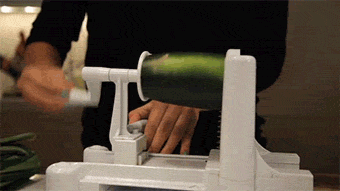
QUOTE


corn


CLEVER
i got 40,000 . .you?

EYE OPENER
thanks, helen
Kitchener stitch, a history.

loveknitting
“The sock, the First World War, and how they changed one another”
a guest post from Beth from the Knitting Needle and the Damage done blog
There’s a type of historical documentation and analysis known as the “microhistory”. The microhistory looks at small things and asks larger questions; it’s an intensive and far-reaching investigation of a small and precise aspect of history, such as the story of a single battle, one person, or a resource or product. Of course as a knitter I feel the long and rich history of knitting shouldn’t be without its fair share of microhistories, and I have a subject to suggest: the humble sock. In the microhistory of the sock at least one whole chapter could be written about the hand-knitted sock and the role it has played in various wars. This year marks the 100th anniversary of the beginning of World War I, and it seems like an opportune time to look at what the history of the hand-knitted sock can tell us about WWI.
As many knitters know, British, Canadian and American knitters were exhorted by their governments and officially sanctioned organizations such as the Red Cross to knit for the war effort during both World Wars, and the call was readily answered. Knitting was a way for those at home to feel they were actively and materially helping their loved ones at the front, and also helped to soothe the knitters’ anxieties over the dangers faced by their men at the front as well as cope with more generalized worries over the progress of the war.
Knitting played such a role in the war effort that it got referenced in many a wartime song and story. Canadian author L.M. Montgomery (best known for her book Anne of Green Gables), was both a knitter and personally obsessed by WWI, and knitting figures largely in both her personal journals during the war years and in her 1920 novel Rilla of Ingleside, which is the story of Anne’s daughter Rilla and her role in the war effort on the home front. Teenage Rilla Blythe learns to knit socks and writes in her diary that she learned to set the heels of the socks she made because she felt it was “shirking” to get someone else to do it for her, and Susan Baker, the maid-of-all-work at Ingleside, announces that a “sock a day is her allowance”. All the women of Ingleside knit fervently when especially anxious over the war news. At one point Susan Baker even goes so far as to knit on a Sunday, though she feels it’s a transgression against the fourth biblical commandment, and one occasion Anne knits four inches past the point where she should have turned the heel on her sock because her mind was preoccupied with whether the Canadian government would be able to bring conscription legislation into force.
Not only did knitted socks play a role in World War I, but conversely, World War I has had a lasting impact on the knitted sock. Until World War I socks typically had seamed toes, and these seams caused great discomfort for soldiers on forced marches and in the wet and muddy trenches, where those seams rubbed the men’s toes raw, which in turn could result in dangerous infections. The British Secretary of State for War, Horatio Herbert Kitchener, associated himself with the Red Cross drive to urge women to knit “comforts” or items for the men in the military, particularly mittens, socks and scarves. He was concerned about the foot problems the sock seams caused and personally contributed a pattern for socks which included a seamless grafting technique that would come to be known as the “Kitchener stitch”.
The Kitchener stitch is still widely used today. Knitty.com has a tutorial on how to work the Kitchener stitch, and there are a number of YouTube videos that demonstrate it, such as this one.
Lord Kitchener is credited with inventing this technique himself, but I’m skeptical as to whether he actually did. Apparently there is no real evidence of it, and I think it much more likely that, at most, he recognized the need for a seamless sock toe, asked a knitter of his acquaintance to figure out a way to create one, and then took the credit in order to use his famous (and, at the time, revered) name to promote it.
I learned the Kitchener stitch method of closing sock toes myself at about thirteen or fourteen when I knitted my very first pair of socks as a Christmas present for my father, although the pattern called it “grafting” and it would be many years before I learned of the method’s historical significance. Now that I do know the story of how the technique came into existence, I doubt I’ll ever again use it without a thought for how my stitches echo the stitches taken by those who knitted socks for soldiers during both world wars, and without wondering what I’m not seeing about my own role in history.
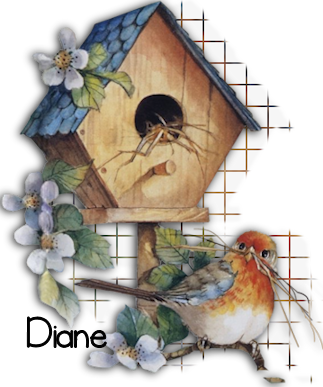
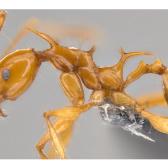

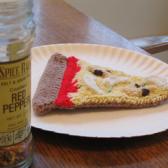

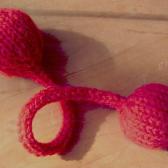



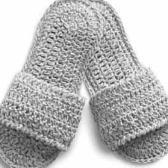








No comments:
Post a Comment